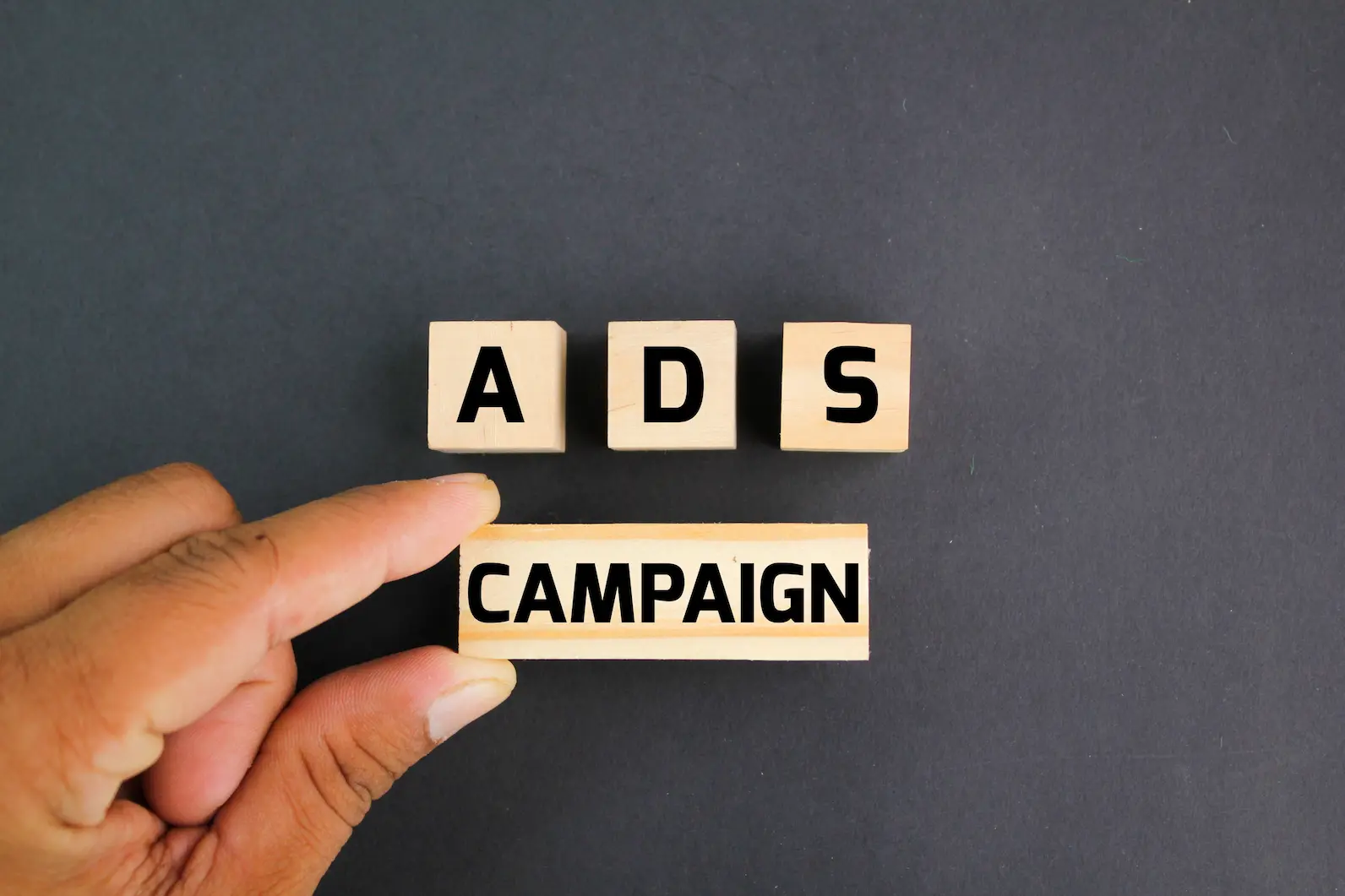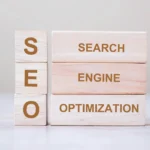Native advertising becomes a powerful tool to promote your business when other marketing methods prove ineffective. Seamless integration with the platform, making your ad visually consistent with typical posts, is its main advantage. On LinkedIn, for example, your ad may be indistinguishable from regular content, ensuring a smoother, less intrusive experience. Its ubiquitous presence, from publisher websites to social media channels, is the main advantage of native advertising. Statistics show that people see native ads 53% more often than traditional ones. And they can boost brand promotion by up to 82%.
To help you choose and determine which type of native advertising is right for you, we have outlined the different types of native advertising in this article.
What is Native Advertising?
Native advertising helps drive traffic, engagement, and conversions on the open web when the walled gardens of search and social are not enough. Find out what native advertising is all about and why the majority of marketers around the world are using it to boost their bottom line.
Native advertising is a form of paid advertising in which the ads are designed to match the look, feel, and function of the media format in which they are displayed. They fit “natively” and seamlessly into the website.
Native ads don’t look like ads, so they don’t interrupt the user’s interaction with the page, unlike banner or display ads. This is key to defining native advertising: to expose the reader to promotional content without sticking out like a sore thumb.
What are Native Ads?
Native ads appear below or next to the article you are reading, often as recommended content on websites. They also appear as part of your news feed on social networks like Facebook or Twitter as ‘in feed’ ads. Search and promoted listings, which appear at the top of your Google search results or in the sidebar, are another form of native advertising.
How do you recognise native ads?
You might think that native ads are hard to spot because they don’t look like ads. The editorial neutrality of the publisher may be compromised, as readers may not even realise they are consuming a paid advertisement. Don’t worry. Consumer watchdogs such as the FTC (Federal Trade Commission) and the IAB (Interactive Advertising Bureau) are working hard to regulate the use of native ads to ensure consumers are not misled.
Even though native ads are seamlessly integrated into the web page, there are usually a few telltale signs that will tell you that it’s a native ad:
“Native advertising is expected to be worth $400 billion globally by 2025. Native advertising is part of the digital marketing toolbox of the world’s biggest and smallest brands. Why not when US publishers say native is the second most effective channel for video campaigns?“
However, the best way of understanding the power of native advertising is to have a look at it in action.
Take the example of Michelin. The global tyre company has seen great success with native advertising. It has even outperformed its social media advertising. They have also increased the quality of their traffic, driven interested and engaged audiences, and reduced their cost per visitor to the site by 16%.
How to Create Native Ads
Native ads are made up of several metadata elements, such as a headline, a thumbnail image, the URL of the content, description text, and more. This may sound complicated, but creating native ads is not difficult. You just need to be clear about your target audience, your message, and the goal of your native campaign.
The headline, image, and content the ad links to are the key elements marketers need to focus on when creating native ads.
Native ads in feed vs. native ads in content
In-feed and in-content blocks promote sponsored content by integrating it consistently into a publication’s article list. This makes it appear as part of the natural flow of content. Through platforms such as Upworthy and Buzzfeed, which feature sponsored articles, this type of native advertising has become popular. However, by highlighting the need to differentiate between native advertising and content marketing, its effectiveness has become a bone of contention in the marketing world.
The difference between in-feed and in-content native ads is not in the format but in the location in which they are placed. Have a look at how they work and why they are important.
- In-feed native ads are ads that appear within the regular content of a website or app, often in the news feeds of users or on social media platforms. These ads are effective because they blend in perfectly with the surrounding content. They are usually labelled as “sponsored” or “promoted.” They can include static images or video. They usually include a call-to-action button to encourage user engagement.
- In-content native ads are integrated within content, such as a news article. These ads are typically placed between paragraphs or at the end of an article. They create a logical and non-intrusive experience, similar to in-feed ads.
What can in-feed or in-content native ads contain?
- Content Policy
- Download whitepaper or report highlights
- Infographics
- Information based on text
- Video content
- Registration forms for events and emails
Perfect for promoting branded content hosted on external URLs or a publisher’s website, this type of native advertising is ideal. It also encourages users to take action. They can sign up for newsletters, register for events, or download white papers and reports.
Ads with content recommendations
When you search for a product online, whether it’s a wood saw or a book by your favourite author, search engines often display products through widgets. These widgets have become a standard and organic part of the user experience, and people are actively engaging with them, typically labelled ‘recommended’,’ sponsored’, ” or ‘you might also like’. Content recommendation ads enable brands to connect with large publisher audiences and drive website traffic.
How does content recommendation advertising work?
Various website plugins and software platforms use this type of native advertising. Content-based recommendation tools primarily use keywords and tags to suggest content. However, it’s also important to consider how users interact with the content they’re currently viewing. Even more accurate suggestions can be provided by hybrid recommendation tools that combine both approaches.
Strategic placement—placing your content where visitors are most likely to engage with it—is essential to achieving your content recommendation goals. We recommend placing ads at the end of articles or videos to provide a natural next step for visitors after they finish reading.
Why is native advertising useful?
Content recommendation widgets allow brands to promote their products and services naturally, without alienating the customer. On the contrary, they give them exactly what they are looking for. Based on the user’s recent searches in the search engine, these widgets can also be displayed during site visits. This acts as a reminder of what the user is looking for and can lead to a quick purchase. This type of native advertising is useful for your business because it is natural and unobtrusive.
Who should use content referral widgets?
- Publishers and media companies who want to engage their audiences by providing additional relevant content,
- Brands attracting potential customers through content marketing,
- Brands and advertisers who want to promote their products or services by reaching out to the most important audiences on the major platforms,
- Through personalised recommendations, content marketers try to increase user time on websites.
Branded content vs. native content
Branded/native content is paid-for content from a brand that is published in the same format as an editorial article on a publisher’s site. It is often created in collaboration with the publisher’s content teams, according to the IAB. This will typically include content that is sponsored or partnered.
Traditionally, publishers or content marketing agencies produce native content for brands. However, many large organisations now have their content marketing teams. You can use a combination of methods to promote native advertising, such as social media or influencer marketing, but this type of advertising must be uniquely yours.
Forbes Brand Voice
There are times when brands and publishers have the opportunity to create a deeper partnership than a one-off article. Forbes’ revolutionary native advertising model, BrandVoice, is a prime example. With BrandVoice, brands are allowed to publish content on their affiliate site and reach the large and influential audience of Forbes. Brand Voice was launched 12 years ago with SAP. Since then, it has attracted over 500 advertisers.
One way it works: Article sponsorship
Branded or native content ads are paid-for ads that are published in the same format as an editorial article on a publisher’s website. While sponsored content is now more common on social media, sponsored articles generate significant traffic.
Being featured on platforms like Forbes has transitioned from a distant dream to a tangible opportunity, allowing even smaller brands to gain visibility in world-renowned publications. Sponsored articles typically appear in the featured section with a CTA button that leads to a separate page.
We offer native advertising in the form of sponsored articles across top platforms, including The Guardian, The Times, The Economist, and many more.
Why sponsored article advertising works:
- Build trust with readers and potential buyers by increasing your visibility on well-known and influential sites,
- Enhance searchability: Sponsored articles make it easier for customers to find your brand and learn more about it,
- Communicate values clearly: Ensure customers understand your values from the start by effectively communicating them,
- Relevant and timed: Your article will be placed in the right context at the right time. This will increase its relevance to your audience.
Promoted Listings
Customers tend to shop regularly. This works in your favour because it ensures that they see promoted listings frequently. The native advertising industry has debated whether paid search and display ads should be classified as native. However, they remain an integral part of native advertising.
Working principles in conflict
Typically found on non-content-based websites, such as e-commerce sites. Promoted listings appear next to the products or services offered. Sponsored items work similarly to search ads: When a user searches for something, the search engine will remember it, and that product will follow the user around the web. As Meta has updated its personalised advertising policy, Promoted Listings are now available on social networks.
It’s not organic content within the site’s ecosystem. But it’s still effective. Promoted listings appear in-stream and are aligned with the purpose of the page. They inspire audiences to new behaviours through targeted advertising.
As a result, they are often the catalyst for immediate consumer response. Classifieds not only help businesses promote their products. They are also becoming more cost-effective. For example, eBay now only charges customers when a sale is in progress. This makes it more affordable for those wishing to sell.
The main benefits of a promoted listing are
Advertise your products in international and domestic markets to maximise visibility;
- No more hassle: Automatically select products, rates, keywords and campaign settings to maximise sales growth with minimum advertising spend;
- Advertising cost optimisation: Services like Webinterpret allow you to control costs and optimise campaigns according to your budget fully.
- Strategic product selection: Emphasise the promotion of only the most effective products to maximise sales.
Is it worth promoting listings?
What you’re selling largely determines your sales performance. Products such as clothing and footwear tend to sell well because they are in constant demand, leading to natural visibility. Without much extra effort, these items tend to get a lot of organic views. On the other hand, less popular items may not attract as many views initially. You may need to promote them more actively to push your listing higher than those of other sellers and help you sell faster.
It’s important to monitor your results closely when experimenting with promotions. For both promoted and organic listings, eBay provides data on impressions, views and sales. You will need to analyse this data and determine if the promotions are generating enough sales to justify the replacement of organic sales.
Paid Search Ads
Paid search advertising appears at the top of search results or in prominent positions. This ensures optimal placement on platforms such as Google and Bing. It can target individual domains and businesses based on the user’s location and preferences and is used for search engine marketing. They are usually labelled as “sponsored” or “ads,” but they generally look the same as normal results on a page.
Why does paid search advertising work?
Native search ads are relevant to users because they are in-stream and aligned with the content of the page. Because search results are links, these ads reflect the behaviour of the content. They are highly targeted to drive direct responses such as sales, downloads, or data collection. While users are more likely to click on ads that match their search, there’s a risk. People generally have a more negative perception of ads.
How do I use paid search ads?
Connecting paid advertising with people looking for a product or service is the goal of this form of online marketing. CPC (cost per click) is the most popular payment model offered by the search engine. Individual clicks may seem costly. However, well-designed campaigns can reduce these costs. Ads are only shown to users who are actively searching for what you offer. This increases the chances of conversion. The return on sponsored links often exceeds the cost in the long run.
Advantages of paid advertising
Flexibility, which allows you to easily control your budget, is the advantage of this type of native advertising. This is useful for temporary promotions, such as sales or new collections. Paid search results can also be targeted to business customers, which adds to their versatility. More popular than results at the bottom are blue links or image links at the top of the first search page. So that’s a bit of a wrap-up:
- Outreach to specific target groups, i.e. consumers, business customers or other people;
- Personalised ads are more effective than those targeted at everyone.
- Providing analytical data that allows analysing traffic in a store or on a website as well as determining various metrics, e.g. conversion rate.
In-Ad (IAB Standard)
In-ads appear outside of the editorial space but still include contextually relevant content and native elements in standard IAB containers. For example, while looking up how to cook duck, you might see related recipes displayed. These out-of-stream ads are relevant to the context of the page and are sold with guaranteed placement. This ensures that the advertiser knows what content will surround their ad. They are targeted to drive brand engagement by matching site functionality and introducing new user behaviours.
IAB standard ads
To avoid problems and misunderstandings, the IAB has set a standard for master ad sizes to ensure that your business gets the best possible experience with this type of native advertising. Through the use of standard ad sizes, publishers can maximise display advertising revenue on their websites. That way publishers are likely to stay high. This is where the IAB standards are explained:
- A set of the three most common ad sizes are referred to as IAB Standard Ads: 728 × 90 (full banner), 300 × 250 (medium rectangle) and 160 × 600 (skyscraper);
- Other ad sizes such as smartphone banners (300×50, 320×50), billboards (970×250) and portraits (300×600) are also included in the new ad portfolio.
The benefits of the IAB standards
- Simplifies the creation of advertising materials,
- Display ads consistently across multiple devices,
- Guidance for publishers in the exploration of new social media technologies
- A better experience for the user,
- IAB Standard ads can maximise revenue for publishers using ad networks such as Google AdSense.
Exotic forms of native advertising
It is not only in the jungle but also in history that exotic examples of native advertising can be found. One notable case is that of Nikolai Shustov. He founded a distillery in Moscow in 1863. At the beginning of the 20th century, Shustov’s cognac gained international recognition. It won the Grand Prix at the 1900 World Spirits Exhibition in Paris. This success has catapulted the brand across Europe. In Russia, it has been promoted using unconventional strategies.
Shustov’s strategies were certainly unconventional, but the point of advertising is to make an impact. His advertisements appeared in newspapers as notes, poems, features, fables, jokes, or cartoons. They all mentioned cognac or other liqueurs. He even went so far as to bribe actors—a famous actress who played Larisa in A.N. Ostrovsky’s The Dowry was asked to serve ‘Shustov’s Cognac’, even though the brand didn’t exist when the play was written.
Shustov also made a deal with the students, who would go to the bars and ask for his cognac. If it wasn’t available, the result would be a fight, and the next day the incident would be in the newspapers. Such aggressive promotion, as a note from the ‘City Diary’ of ‘Revelskie Izvestia’ shows, sometimes caused outrage:
Ethics in Native Advertising: The Case of Shustov’s Cognac
“On the platform of Revel station, there is a half-length portrait of a man in a gilded frame. Holding a glass and smiling as he enjoys the drink, the Caucasian figure resembles a popular resort conductor. This is an advertisement for the brand, with the large inscription ‘Shustov’s Cognac’. It makes you wonder, though: How is it ethically acceptable for such seductive images to be displayed in a public place?
It would be more appropriate to have these portraits in private rooms at buffets, not on the platforms of state railway stations where students and children have access to them. There will probably be a petition from the Revel teaching community for the removal of this ‘public drunkard’ image and its relocation to a more appropriate site.”
The historical case of Shustov’s advertising is a vivid example of the aggressive use of native advertising. Although the advertising methods were effective in attracting attention, they raised ethical questions. It is important to remember that while native advertising should be part of the context of the environment in which it appears, it should not be in breach of ethical norms or influence minors or vulnerable audiences. It highlights the importance of balancing advertising creativity with social responsibility. This is why advertising should be chosen wisely and with understanding. It has a direct impact on the reputation of your company.










11 Responses